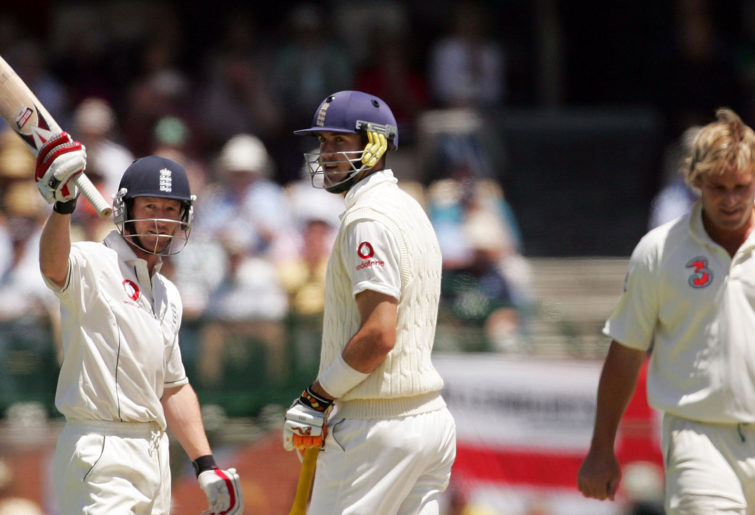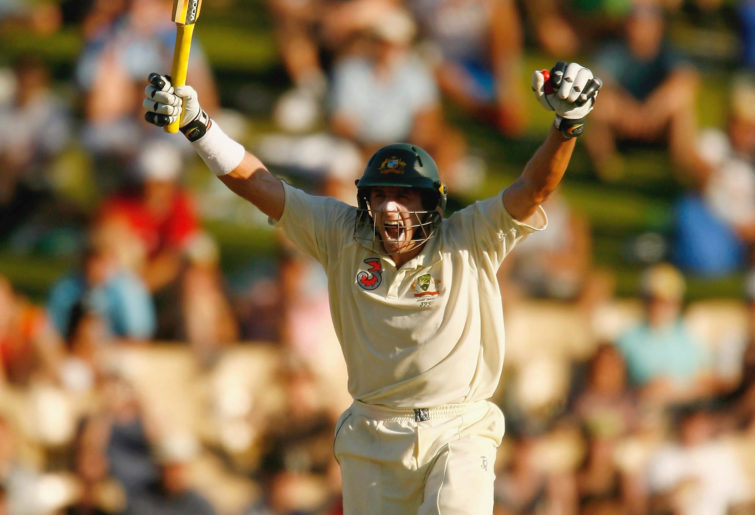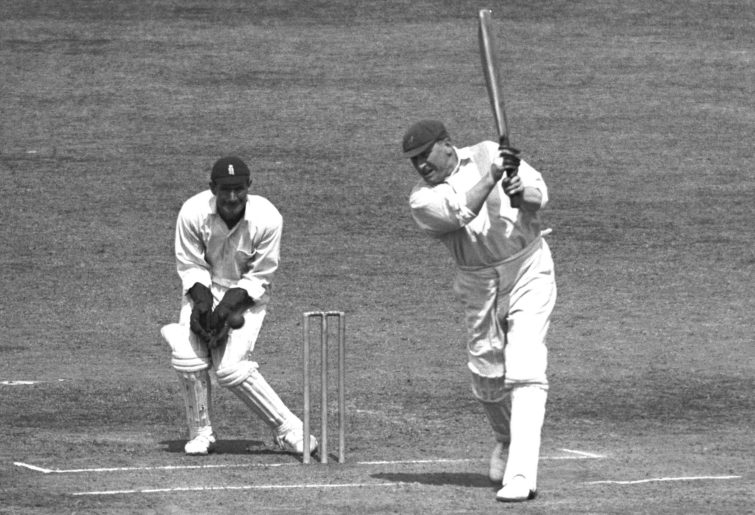World Cup chances up in the air but Smith makes Major call on T20 future, Green dumped despite huge IPL deal
Test great Steve Smith is to play for Washington Freedom in the second season of Major League Cricket as the Australian influence in the…
Opinion
Following the opening match at Trent Bridge, this second Test will take place at Edgbaston.
The teams composed solely of players born in the month of May are evenly matched, with proven top orders and well balanced bowling attacks. Another 19th century dual international is good enough to earn selection by each country, and therefore play against himself.
Edgbaston has hosted 52 Tests to date, including 15 for the Ashes. The head-to-head record is six wins to England and four to the visitors, with five drawn. Over those matches England enjoys a slight 31.79 to 30.86 advantage in batting average, equivalent to a 19-run victory margin.
My tip is that the two countries will go to the third Test at Lord’s locked at one win apiece, setting up a blockbuster at the home of cricket that on paper is possibly the best match of the entire calendar.
Frank Woolley
64 Tests, 1909-1934, 3283 runs at 36.07, five centuries, 83 wickets at 33.91
Woolley was an outstanding fast-scoring left-handed batsman, left-arm orthodox spin bowler and slip fieldsman. His Ashes highlights included 62, 5-29 and 5-20 at the Oval in 1912, and 95 and 93 at Lord’s in 1921. He scored centuries at the SCG in both 1911-12 and 1924-25. In first-class cricket only Sir Jack Hobbs has scored more runs, and no fieldsman has taken more catches. His first and last Tests were 25 years apart, in a career interrupted by World War I, which commenced when he was aged 27. Bill Woodfull wrote of him that “He made the game look so untidy. It appeared as if the wrong bowlers were on and the fieldsmen all in the wrong places.”
Bob Woolmer
19 Tests, 1975-1981, 1059 runs at 33.09, three centuries
Woolmer was an Indian-born top-order batsman and useful medium-paced bowler. In ten matches against Australia he scored 663 runs at 39.00, including all three of his centuries. They comprised 149 at the Oval in 1975, and 120 and 137 at Lord’s and Old Trafford respectively in 1977. His career was interrupted by two seasons of World Series Cricket, and later a rebel tour to South Africa. He died while coaching Pakistan at the ICC World Cup in 2007.
Ted ‘Lord Ted’ Dexter (captain)
62 Tests, 1958-1968, 4502 runs at 47.89, nine centuries, 66 wickets at 34.93
Dexter was an exhilarating middle-order batsman who drove powerfully, and a useful medium-pace bowler. Against Australia he scored 1358 runs at 38.80 including 180 at Edgbaston in 1961, and 174 at Old Trafford in 1964. Of his nine centuries, six were in excess of 140. He retired from first-class cricket aged 33 to pursue business interests. He was born in Milan.
Denis Compton
78 Tests, 1937-1957, 5807 runs at 50.06, 17 centuries
Compton was a much loved risk-taking batsman considered one of England’s finest ever, and useful left-handed wrist spinner. His career was interrupted by World War II, which commenced when he was aged 21, and during which he both served in India and played 14 football matches for England. Against Australia he scored 1842 runs at 42.83 with five centuries, including 459 runs at 51.00 in 1946-47 and 562 runs at 62.44 in 1948. His grandson Nick also played cricket for England.
Paul Collingwood
68 Tests, 2003-2011, 4259 runs at 40.56, ten centuries
Collingwood was a determined batsman and outstanding fieldsman, and captained England’s limited-overs side. Against Australia, he scored 206 at Adelaide Oval in 2006-07. However, his overall Ashes record in 16 matches was only 783 runs at 30.11 with no other centuries, including 267 runs at 24.27 at home.

(Photo by Mark Dadswell/Getty Images)
Gilbert ‘The Croucher’ Jessop
18 Tests, 1899-1912, 569 runs at 21.88, one century, ten wickets at 35.40
Jessop was one of the Golden Age’s most exciting players with bat, ball and at cover point. In Ashes matches at home, he scored 267 runs at 29.66. Against Australia at the Oval in 1902 when England were 5-48 chasing 263, he inspired a one-wicket victory by scoring 104 runs out of 139 in only 77 minutes. He is the most famous hitter in the history of cricket, and scored his 53 first-class centuries at an average rate of 82.7 runs per hour. On his Test debut against Australia, he scored 51 in 65 minutes and also opened the bowling.
Maurice ‘Chubby’ Tate
39 Tests, 1924-1935, 1198 runs at 25.48, one century, 155 wickets at 26.16
Tate was a medium-fast seam and swing bowler known for his apparent pace off the pitch, and useful lower-order batsman. In Australia in 1924-25 he took 38 wickets at 23.18 including 6-130 and 5-98 at the SCG, 3-142 and 6-99 at the MCG, and 4-92 and 5-115 again at the SCG. His father Fred had entered Ashes history at Old Trafford in 1902 by dropping a vital catch and being the last batsman dismissed in a three-run loss.
Hedley Verity
40 Tests, 1931-1939, 669 runs at 20.90, 144 wickets at 24.37
Verity was a skilful slow-medium left-arm orthodox spin bowler and useful right-handed batsman. Against Australia at Lord’s in 1934, he took 7-61 and 8-43 on a rain-affected pitch, including 14 wickets in one day. His career was interrupted at age 34 by World War II, in which he died while a prisoner-of-war in Italy.
George Duckworth (wicketkeeper)
24 Tests, 1924-1936, 45 catches, 15 stumpings
Duckworth was a fine wicketkeeper known for his forthright appealing. He later became a much loved scorer, tour manager and baggage master, and cricket and rugby league commentator.
Bob Willis
90 Tests, 1971-1984, 325 wickets at 25.20
Willis was a tall and courageous fast bowler. In 35 matches against Australia he took 128 wickets at 26.14. His Ashes highlight was 8-43 at Headingley in 1981 to successfully defend a 130-run target. He also took 7-78 at Lord’s in 1977. He captained England on their Ashes tour of 1982-83. He took Dylan as a middle name, in admiration of the singer.

(PA FILE via AP)
Jack Ferris
Nine Tests, 1887-1892, 61 wickets at 12.70
Australian-born Ferris was a left-arm swing bowler and left-handed batsman, who played for both countries. For Australia he took 48 wickets at 14.25 in eight matches, and formed an unplayable combination with CTB Turner. His match figures included 9-103 on debut, 9-140 in his next game, 8-45 and 9-74. For England he played one match, taking 6-54 and 7-37 in Cape Town in 1891-92. He died in South Africa at the age of 33, while serving with the British army in the Boer War.
Honourable mentions: Keith Fletcher, Bob Wyatt, Graeme Hick, Graham Dilley, Jack Hearne, William Barnes, Tich Freeman, Colin Blythe.
Ian Redpath
66 Tests, 1964-1976, 4737 runs at 43.45, eight centuries
Redpath was a determined opening batsman and brilliant close-in fieldsman. He was Australia’s last amateur player, declining a fee while scoring 97 on debut so as to not jeopardise his amateur football career. In England in 1964 and 1968, he scored 526 runs at 30.94. In other Ashes matches he scored 171 at the WACA in 1970-71 and 105 at the SCG in 1974-75. He scored 575 runs at 52.27 in his final series, against the West Indies in 1975-76. He did not hit a six until his final match, in which he also hit a second one.
Phil ‘Pro’ Jaques
11 Tests, 2005-2008, 902 runs at 47.47, three centuries
Jaques was a left-handed opening batsman whose Test career ended at age 29 in large part due to injury. As a British passport-holder, he continued his county cricket career for a further six years with much success. He scored two centuries against Sri Lanka, and his last three Test innings were 76, 31 and 108 in the West Indies. He never played an Ashes match.
Michael ‘Mr Cricket’ Hussey
79 Tests, 2005-2013, 6235 runs at 51.52, 19 centuries
Hussey was a left-handed batsman who did not debut until the age of 30, despite scoring heavily at Sheffield Shield and county level. He was particularly successful in 15 matches against England, with 1304 runs at 59.27 including centuries at the WACA (twice), the Gabba and the Oval. His first five Ashes innings were 86, 91, 61 not out, 74 not out and 103 in 2006-07.

(Photo by Tom Shaw/Getty Images)
Alan Kippax
22 Tests, 1925-1934, 1192 runs at 36.12, two centuries
Kippax was a graceful middle-order batsman whose stroke-play was sometimes likened to that of Victor Trumper. In England in 1930, he scored 329 runs at 54.83. For New South Wales he scored 6096 runs at 70.88, including 260 not out while sharing a 307-run last-wicket record partnership in 1928-29.
Peter Burge
42 Tests, 1955-1966, 2290 runs at 38.16, four centuries
Burge was a tall and aggressive middle-order batsman, and exceptionally strong against short-pitched fast bowling. In Ashes matches he scored 181 at the Oval in 1961, 103 at the SCG in 1962-63, 160 at Headingley in 1964, and 120 at the MCG in 1965-66. He later served as an ICC match referee.
Warwick ‘The Big Ship’ Armstrong (captain)
50 Tests, 1902-1921, 2863 runs at 38.68, six centuries, 87 wickets at 33.59
Armstrong was a middle-order batsman and leg-spinner, and domineering personality. He was one of Australia’s finest captains, and led the country to eight consecutive Ashes match victories during 1920 and 1921. At Old Trafford in 1921, he bowled successive overs either side of an interruption in play. While slim on debut, he weighed 22 stone at the time of his retirement. World War I interrupted his career, which spanned 24 seasons at first-class level.

(PA Images via Getty Images)
Hugh Trumble
32 Tests, 1890-1904, 851 runs at 19.79, 141 wickets at 21.78
Trumble was a tall medium-paced off-spin bowler, fine slip fieldsman, and useful lower-order batsman who once opened in a Test. He was the first bowler to take two Test hat tricks. In 1896 he took 6-59 and 6-30 at the Oval. In 1902 he took 4-75 and 6-53 at Old Trafford, and 8-65 and 4-108 at the Oval. The ICC ranks him ninth among all Australian bowlers. His older brother John also represented Australia.
James Pattinson
21 Tests, 2011-present, 417 runs at 26.06, 81 wickets at 26.33
Pattinson is a fast-medium bowler and useful left-handed lower-order batsman. In four Ashes matches to date, all in England during 2013 and 2019, he has taken 12 wickets at 39.50. He debuted aged 21, but back injuries have affected his fitness and form. His older brother Darren played one match for England in 2008.
Jack Blackham (wicketkeeper)
35 Tests, 1877-1894, 800 runs at 15.68, 37 catches, 24 stumpings
Blackham was Australia’s first wicketkeeper, the first choice for 18 years, and toured England eight times. He regularly stood up to the stumps to fast bowlers, and was also a capable lower-order batsman. Fred Spofforth refused to play in what was the inaugural Test, when Blackham was preferred to New South Wales’ Billy Murdoch. He was an inaugural member of Cricket Australia’s Hall of Fame.
Patrick Cummins
30 Tests, 2011-present, 647 runs at 17.02, 143 wickets at 21.82
Cummins is a fast bowler who made a match-winning debut aged 18, then due to injury did not play his next Test until more than five years later. Against England, he has played ten matches to date, taking 52 wickets at 21.84. In the ICC’s bowler standings, he has the fifth highest ranking of all time.

(Gareth Copley/Getty Images)
Jack Ferris
Nine Tests, 1887-1892, 61 wickets at 12.70
Ferris played for both countries, and his pen portrait is above.
Possible tour party members: Andrew Hilditch, Michael Bevan, David Hookes, James Kelly, Gil Langley, Tim Wall, Ernie McCormick.